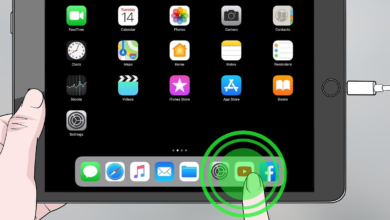How to Speed Up Your MacBook Without Extra Software
Speed up your MacBook without extra software using these built-in macOS tricks. Boost performance and optimize settings no downloads needed.

If your MacBook is running slower than usual, you don’t always need third-party tools to fix it. Over time, temporary files, background processes, and system clutter can bog down performance, but macOS includes built-in solutions to speed up your MacBook without extra software. By optimizing settings and performing routine maintenance, you can restore your device’s responsiveness efficiently.
Many users assume that installing cleaner apps or performance boosters is necessary, but these can sometimes cause more harm than good. Instead, leveraging native macOS features such as storage management, startup program control, and system resets can significantly enhance speed without risking security or stability. This guide will walk you through the best software-free methods to keep your MacBook running smoothly.
How to Speed Up Your MacBook Without Extra Software
Free Up Storage Space
One of the primary reasons a MacBook slows down is low storage space. When your hard drive is nearly full, the system struggles to allocate memory efficiently. To free up space, start by checking your storage usage in About This Mac > Storage. Delete unnecessary files, such as old downloads, duplicate photos, and unused applications. Empty the Trash regularly and consider offloading large files to iCloud or an external drive. macOS also offers Optimize Storage, which automatically removes watched iTunes movies and old email attachments.
Close Unnecessary Background Apps
Too many background apps can drain your Mac’s RAM and CPU resources. Check the Activity Monitor (found in Utilities) to see which apps are consuming the most power. Force-quit resource-heavy applications by selecting them and clicking the “X” button. Also, disable unnecessary browser tabs and auto-launching apps to reduce system strain.
Manage Startup Programs
Over time, many applications set themselves to launch at startup, slowing down your Mac’s boot time. To disable startup items, go to System Settings > General > Login Items. Remove unnecessary apps from the list to speed up startup. Keeping only essential programs (like cloud services or security tools) will improve performance.
Clear Cache and Temporary Files
Cache files help apps load faster, but over time, they can accumulate and slow down your Mac. To clear cache, open Finder, press Cmd + Shift + G, and type ~/Library/Caches. Delete the contents of this folder (avoid system-critical files). Additionally, clear browser cache in Safari, Chrome, or Firefox to free up memory.
Reduce Visual Effects
macOS includes animations and Visual effects that, while aesthetically pleasing, can slow down older MacBooks. To disable them, go to System Settings > Accessibility > Display. Enable Reduce Motion and Reduce Transparency to minimize graphical strain. Also, consider using a simpler desktop wallpaper and reducing Dock animations.
Keep macOS Updated
Apple regularly releases software updates that include performance improvements and bug fixes. Ensure your MacBook is running the latest macOS version by going to System Settings > General > Software Update. Updating macOS can resolve slow performance issues and enhance security.
Reset SMC and NVRAM
If your MacBook is running unusually slow, resetting the System Management Controller (SMC) and NVRAM can help. For Intel-based Macs, shut down, then press Shift + Control + Option + Power for 10 seconds. For NVRAM reset, restart and hold Cmd + Option + P + R until the Apple logo appears twice. These resets can fix battery, fan, and performance issues.
Optimize Finder Performance
Finder can become sluggish if it’s indexing too many files. To speed up Finder, go to Finder > Preferences > Advanced and disable “Keep folders on top” and “Search Current Folder” for faster searches. Also, avoid using Stack view with too many files, as it can slow down navigation.
Disable Unnecessary Widgets and Notifications
Dashboard widgets and constant notifications can consume system resources. To disable widgets, go to Notification Center > Edit Widgets and remove unused ones. Similarly, limit app notifications in System Settings > Notifications to reduce background activity.
Reinstall macOS as a Last Resort
If your MacBook is still slow, a fresh macOS install can help. Backup your data using Time Machine, then reinstall macOS via Recovery Mode (Cmd + R). This removes corrupted system files and resets your Mac to factory settings, often restoring peak performance.
Challenges of Speeding Up Your MacBook
Limited System Tools for Deep Cleaning
While macOS provides basic maintenance features, it lacks comprehensive tools for thorough system optimization. Users must manually hunt down cache files, language packs, and system logs scattered across various folders. The absence of a centralized cleaning interface makes the process inefficient and potentially overwhelming for non-technical users.
Time-Intensive Manual Optimization Process
Each optimization step requires significant time investment and technical knowledge. From analyzing startup items to manually clearing browser caches across multiple applications, the process demands constant attention. Unlike automated tools, this manual approach needs to be repeated regularly to maintain performance benefits.
Risk of Accidental System Modifications
Without proper guidance, users might delete critical system files or disable essential background processes. The macOS file system contains many interdependent components where wrong changes can cause application crashes or system instability. This risk increases when using Terminal commands without full understanding of their consequences.
Difficulty Identifying Performance Bottlenecks
MacOS provides limited visibility into what’s actually slowing down your system. While Activity Monitor shows current resource usage, it doesn’t track historical data or provide intelligent suggestions. Users must become their own diagnosticians, piecing together clues from various system reports.
No Ongoing Performance Monitoring
After completing optimizations, there’s no built-in way to track whether the changes were effective long-term. The system won’t alert you when new performance issues emerge, requiring constant vigilance. This reactive approach means problems often go unnoticed until they significantly impact usability.
Physical Hardware Limitations
Software optimizations can’t overcome aging hardware constraints. A mechanical hard drive or older SSD will still face inherent speed limitations. Similarly, systems with 4GB RAM or less will struggle regardless of software tweaks, highlighting the boundaries of software-only optimization.
Incomplete Storage Management
While macOS shows storage categories, it doesn’t provide detailed breakdowns of duplicate files, old downloads, or redundant backups. Users must manually inspect each folder, which becomes impractical as storage capacity increases. The system also doesn’t automatically identify rarely-used large files that could be archived.
Browser Performance Optimization Challenges
Each browser stores cache differently, requiring separate cleaning procedures. Safari, Chrome, and Firefox all have different cache locations and management interfaces. This fragmentation makes maintaining optimal browser performance particularly time-consuming without dedicated cleaning tools.
Lack of Automation for Routine Maintenance
Essential maintenance tasks like cache cleaning and temp file removal must be performed manually each time. There’s no built-in way to schedule these tasks, meaning users must remember to perform them regularly. This leads to inconsistent maintenance and gradual performance degradation.
Difficulty Reverting Changes
Unlike some optimization software that creates restore points, manual changes can’t always be easily undone. If a performance tweak causes problems, users may struggle to identify and reverse the specific change. This creates hesitation about attempting optimizations in the first place.
Read More: How to Free Up Space on Your iPhone Without Deleting Photos
Conclusion
Speeding up your MacBook without extra software is not only possible but often the safest and most effective approach. By utilizing macOS’s built-in tools and following simple maintenance practices, you can significantly improve your device’s performance without risking system instability or security vulnerabilities. From clearing cache files to managing startup items, these methods ensure your MacBook runs smoothly while keeping your data protected.
Remember that regular maintenance is key to sustaining peak performance. Speeding up your MacBook without extra software becomes effortless when you incorporate these habits into your routine. Whether you’re using an older model or a newer MacBook, these optimization techniques will help you enjoy faster speeds, longer battery life, and an overall better computing experience all without downloading third-party applications.
FAQs
How can I speed up my MacBook without installing software?
Use built-in tools like Activity Monitor to close background apps, clean up storage, disable startup programs, and clear cache files to boost performance naturally.
Will deleting cache files improve my Mac’s speed?
Yes, clearing system and browser cache removes temporary files that can slow down your Mac over time.
How do I stop apps from launching at startup?
Go to System Settings > General > Login Items and remove unnecessary apps to reduce boot time and free up resources.
Does reducing visual effects really help performance?
Disabling animations (Reduce Motion) and transparency effects in Accessibility settings can noticeably improve speed on older MacBooks.
How often should I perform these optimizations?
Aim for monthly maintenance—clearing cache, checking storage, and updating macOS to keep your MacBook running smoothly long-term.












One Comment